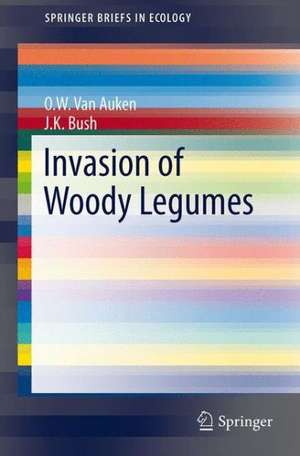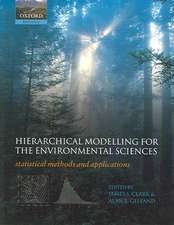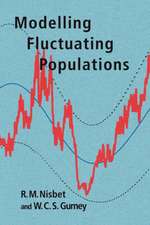Invasion of Woody Legumes: SpringerBriefs in Ecology, cartea 4
Autor O.W. Van Auken, J.K. Bushen Limba Engleză Paperback – 22 mai 2013
Preț: 375.45 lei
Nou
Puncte Express: 563
Preț estimativ în valută:
71.86€ • 78.09$ • 60.41£
71.86€ • 78.09$ • 60.41£
Carte tipărită la comandă
Livrare economică 22 aprilie-06 mai
Preluare comenzi: 021 569.72.76
Specificații
ISBN-13: 9781461471981
ISBN-10: 1461471982
Pagini: 76
Ilustrații: VII, 67 p. 29 illus., 5 illus. in color.
Dimensiuni: 155 x 235 x 10 mm
Greutate: 0.12 kg
Ediția:2013
Editura: Springer
Colecția Springer
Seria SpringerBriefs in Ecology
Locul publicării:New York, NY, United States
ISBN-10: 1461471982
Pagini: 76
Ilustrații: VII, 67 p. 29 illus., 5 illus. in color.
Dimensiuni: 155 x 235 x 10 mm
Greutate: 0.12 kg
Ediția:2013
Editura: Springer
Colecția Springer
Seria SpringerBriefs in Ecology
Locul publicării:New York, NY, United States
Public țintă
ResearchCuprins
1 Abstract-Summary or synopsis of the book.- 2 Introduction-overview of the species and previous work done. Why the topic is important? What is the current distribution of the various species of woody legumes in North America and the rest of the world? Has the distribution changed through the Holocene, the last 20,000 years, or since the end of the last ice age? Have additional changes occurred in North America since the Europeans arrived?.- 3 Species Systematics-Update of species names including review of old and new names.- 4 Community structure-Examination and comparison of the woodland and savanna species densities and basal areas where available.- 5 Species growth-Growth rates and factors that seem to determine growth rates.- 6 Competition-Examination of effects of potential grassland competitors and factors that might limit them and their effectiveness.- 7 Spread of some species-What seem to determine or limit the spread of the woody legumes?.- 8 Climate change effects-Potential effects of elevated levels of CO2 and elevated temperature.- 9 Management-How should these leguminous woodlands, savannas and grasslands be managed or can they be managed? Can restoration of known former grassland communities that currently have high density and cover of various woody legumes be successfully?.- 10 Discussion-Comparison of factors and effects on the growth and changes in these communities. Is succession a major factor? Are there other physical, chemical or biological features or items that should be considered? What will the end communities be? Will there be end communities? 11 The future-What other research is needed to understand these leguminous communities? An overview of our current knowledge will be presented.- 12 Literature cited.
Caracteristici
A focal point of recent research on woody legumes, especially the Acacias and their communities Addresses many unresolved problems associated with legume woodland and savanna communities Details how global warming and climate change affects the population growth of woody legumes?


























